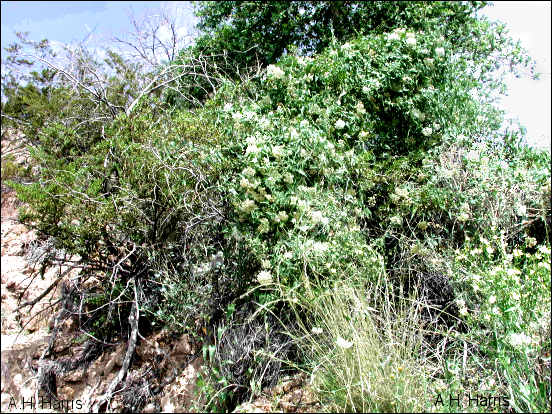

"Let there be light" are the words that plants live by. Getting light is literally a matter of life and death, for only the energy obtained from light allows plants to manufacture their food.
A number of different strategies have evolved to ensure sufficient light. One way is to grow tall enough to tower above possible competitors; the course taken by trees. Then there are desert plants that bathe themselves in light by living in such arid habitats that few potential competitors can thrive. A very different strategy has been adopted by many kinds of plants. Vines, by utilizing whatever's handy to climb upon, make their way into the sunlight without the necessity of manufacturing costly structural support. After all, there are plenty of other plants around that have already made the investment, and surely they wouldn't mind giving some poor relative a lift.
Some people, though, note that vines may harm their hosts by shading
them. Thus, if right and wrong were applicable to nature, then perhaps you could say
that vines really haven't seen the light.

Listen to the Audio (mp3 format) as recorded by KTEP, Public Radio for the Southwest.
Contributor: Arthur H. Harris, Laboratory for Environmental Biology, Centennial Museum, University of Texas at El Paso.
Desert Diary is a joint production of the Centennial Museum and KTEP National Public Radio at the University of Texas at El Paso.

Twining Milkweed (Sarcostemma cynanchoides) over-growing desert plants, including Creosotebush in left center and grasses in the foreground. White flower clusters are those of the milkweed. Photograph by A.H. Harris, UTEP campus.